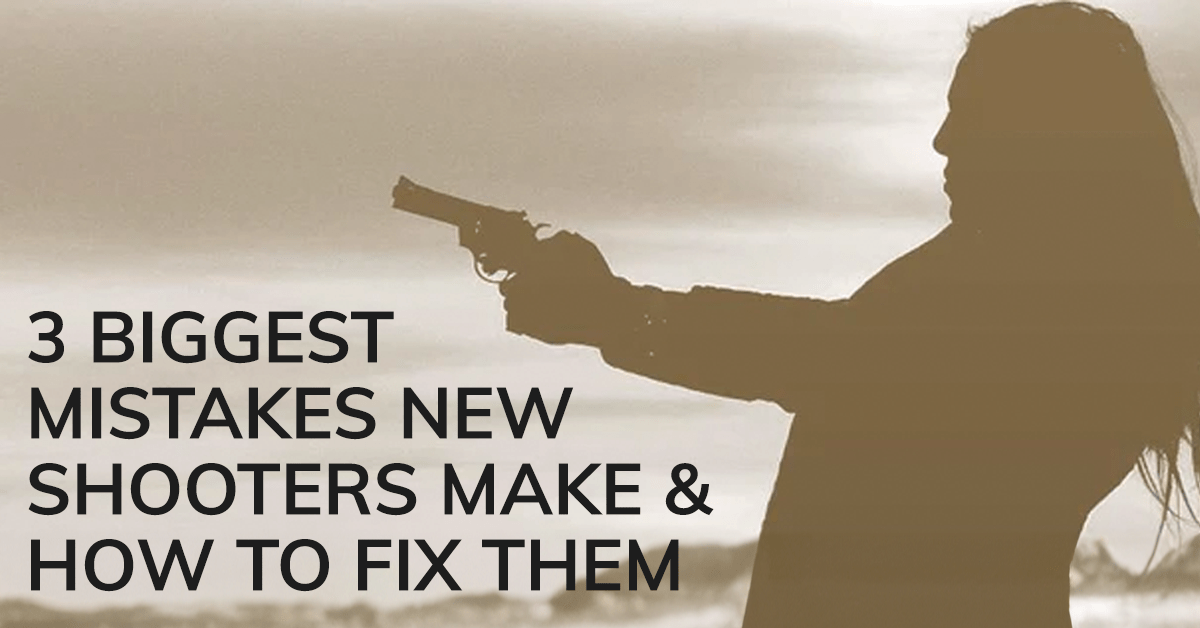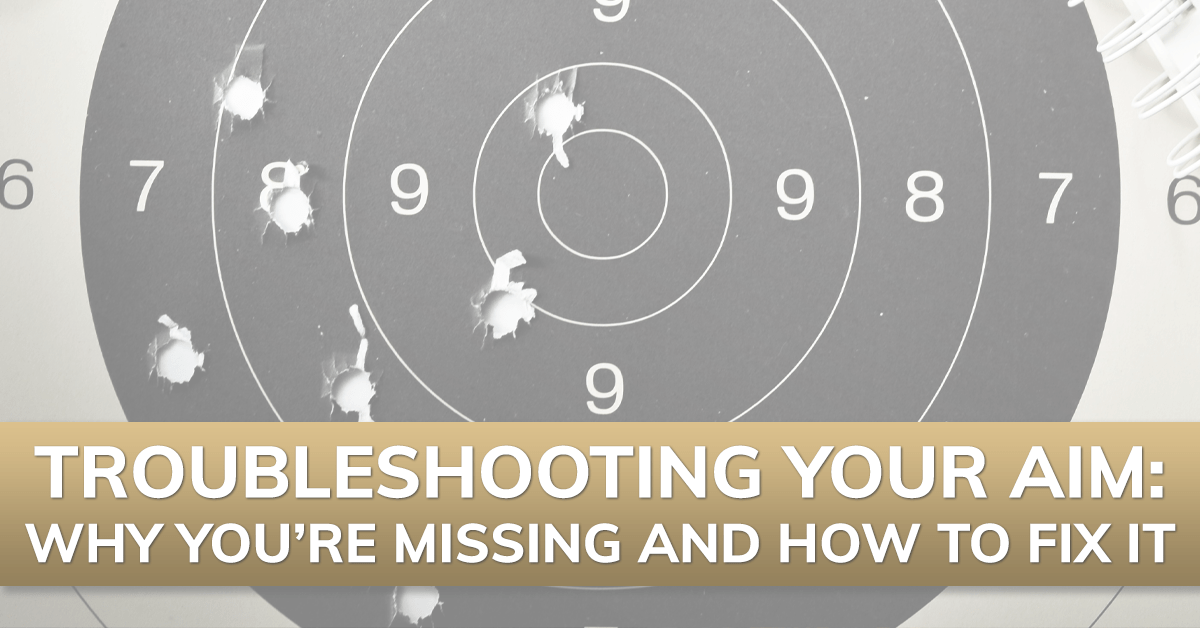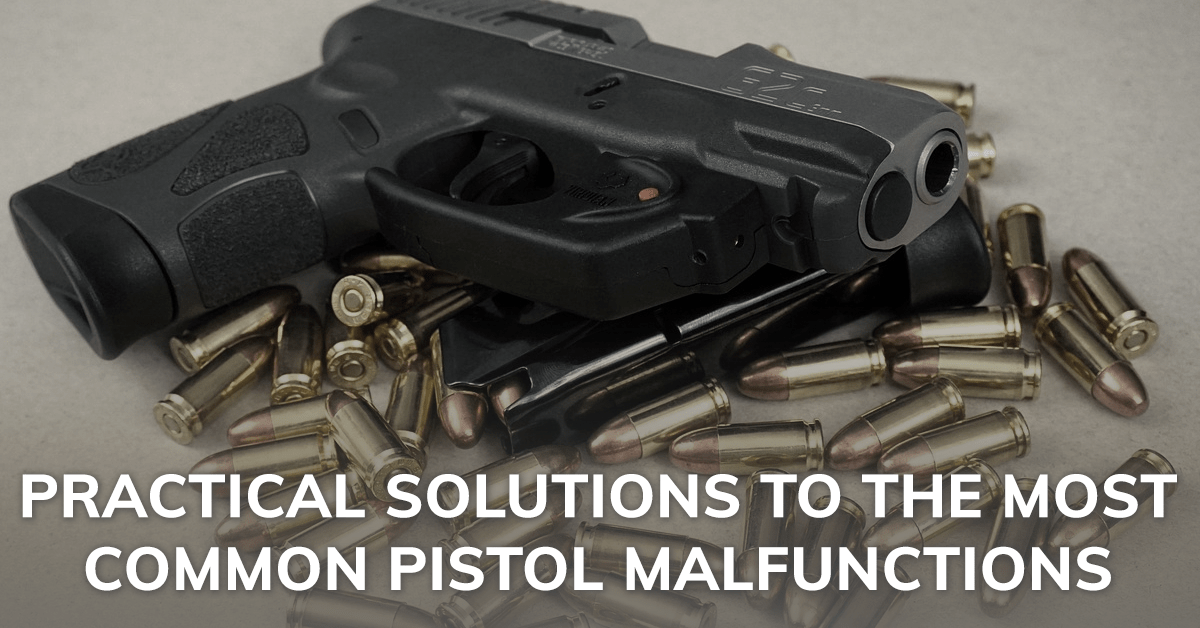Orders Over $100 Ship FREE (USA)!
Orders Over $100 Ship FREE (USA)!
CONCEALED CARRY
(Apparel with holster pockets or concealed-carry features)
PARTS & GEAR
RANGE STYLE
Gift shopping & not sure about size or style? Give a gift card instead!
GIFT IDEAS
EXPLORE
BFCM Sale 20% Off every item! EXTENDED
Black Friday & Cyber Monday EXTENDED: Indulge in Luxury, Pay Less.
Fix Your Flinch!
3 min read
You're shooting at the range and every shot goes low and left. If you're a left-handed shooter, it might be low and right. You can’t figure out what you’re doing to cause it and with every shot, it gets more frustrating.
What the heck is going on?
It's actually a very common occurrence for almost all new shooters, and even for experienced ones. It's known as a flinch, which is caused by anticipating your shot. It may seem impossible to fix, but if you know how to diagnose it, there are some simple things you can do to get rid of it for good.
Isolating the Issue
the first thing you need to do is determine if flinching is what is causing your problem. Unload your firearm completely, including the round in the chamber if there is one. If someone is with you, have them check to make sure the firearm is unloaded and clear.
 If you haven’t done this before, you are about to perform an exercise known as dry firing. Once it is clear, without a magazine in the gun, rack the slide and point the firearm downrange or, if you are doing this at home, point it in a safe direction. Still with an unloaded firearm and all ammunition put away, balance an empty piece of brass on the muzzle of the firearm and perform your normal trigger pull. The goal is to keep the brass on the muzzle of the firearm and not have it wobble. You may have noticed that your muzzle dipped a little when you pulled the trigger. That dip is what is causing your issues.
If you haven’t done this before, you are about to perform an exercise known as dry firing. Once it is clear, without a magazine in the gun, rack the slide and point the firearm downrange or, if you are doing this at home, point it in a safe direction. Still with an unloaded firearm and all ammunition put away, balance an empty piece of brass on the muzzle of the firearm and perform your normal trigger pull. The goal is to keep the brass on the muzzle of the firearm and not have it wobble. You may have noticed that your muzzle dipped a little when you pulled the trigger. That dip is what is causing your issues.
Flinching or anticipation happens for a couple of reasons. First, your subconscious knows when the gun is about to go bang when your finger finishes taking up the slack in the trigger. Just as any other time you might now when a loud bang is about to happen, you tense up and pull the trigger harder to get past it. Sometimes too, we seem to want to help the shot get down range and we push the firearm toward the target a bit. The result is the same either way.
Fixing the Problem
Dry fire is a great way to get past the flinch. As described above, make sure there is no ammunition anywhere around, with the gun pointed in a safe direction, rack the slide, get your sight picture and pull the trigger. Pull the trigger slow and steady at first to feel how the trigger on your firearm feels, how heavy it is, where it naturally stops before the shot would break and how far to the rear it travels.
When shooting with a bang involved, it’s hard to isolate all that movement. When there’s no bang, you can concentrate better. Repetitions are the key and the goal is to keep the muzzle of your firearm as still as possible which keeps your sight picture true.
 Another good practice is through the use of dummy rounds or snap caps. This drill is done while AT the range, no dry fire here. Have someone fill your magazines, randomly inserting a snap cap, so that you don’t know where they are in the magazine. A snap cap (dummy round) simulates a malfunction of sorts in that it does not fire, so there will be no bang or recoil. If you are indeed flinching/anticipating, when the dummy round loads but does not go bang, you can actually see and feel the muzzle dip. Knowing that dummy rounds are there will also make you pay better attention to your trigger pull each and every time.
Another good practice is through the use of dummy rounds or snap caps. This drill is done while AT the range, no dry fire here. Have someone fill your magazines, randomly inserting a snap cap, so that you don’t know where they are in the magazine. A snap cap (dummy round) simulates a malfunction of sorts in that it does not fire, so there will be no bang or recoil. If you are indeed flinching/anticipating, when the dummy round loads but does not go bang, you can actually see and feel the muzzle dip. Knowing that dummy rounds are there will also make you pay better attention to your trigger pull each and every time.
Over time, using either one of these methods will help you cure the flinch. It’s an easy fix, but not a fast fix and multiple repetitions are crucial.
And be aware that if you ever have a lapse in practice time, the flinch might return when you head back to the range. Now that you have the tools to fix it, you can use the same easy drills to cure it!
Also in Skill Building: Troubleshooting

3 Biggest Mistakes New Shooters Make & How To Fix Them
4 min read
Here are a few of the biggest mistakes new shooters make, along with some friendly advice on how to correct the issues.

Troubleshooting Your Aim: Why You’re Missing Your Target and How to Fix It
3 min read

Practical Solutions to The Most Common Pistol Malfunctions
4 min read

